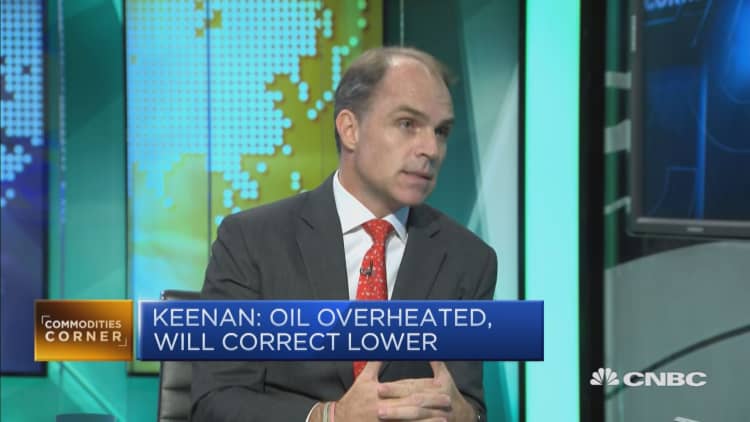Oil prices were firmer on Friday after hitting fresh three-year highs in the previous session, as weakness in the dollar continued to underpin prices with crude on track for a weekly gain.
U.S. West Texas Intermediate (WTI) crude futures ended Friday's trade up 63 cents, or 1 percent, at $66.14 a barrel, the best settle since Dec. 4, 2014. On Thursday, they reached their highest intraday level since December 2014, at $66.66 per barrel.
Brent crude futures rose 29 cents to $70.71 per barrel at 2:21 p.m. ET. On Thursday, the contract climbed to as high as $71.28 per barrel, also its highest since December 2014.
"One has to question if this rally is sustainable. Downside protection is going to be warranted," said Brian LaRose, technical analyst at United-ICAP.
Both contracts posted weekly gains after support from a weakening dollar, which on Friday hit new three-year lows against a basket of other leading currencies.

"This inverse dollar relationship with crude can be nebulous at times, but we've reached a point where the impact will be felt in the form of higher crude prices," said John Kilduff, partner at Again Capital in New York.
As oil is traded in dollars, swings in the greenback can impact oil demand as they affect the price of fuel purchases for countries using other currencies.
Still, crude prices were capped by seasonally weakening demand.
Georgi Slavov, head of research at commodities brokerage Marex Spectron, said despite a generally healthy outlook, there were short-term oil demand headwinds due to the coming end of winter in the northern hemisphere.
Many refiners shut down after winter for maintenance, resulting in lower orders for crude, their most important feedstock.
"Demand is starting to weaken as ... refining capacity was taken out of the market," Slavov said.
This is reflecting in oil inventories. U.S. bank Morgan Stanley noted that global oil stocks built up overall in the week ending Jan. 19.

On the supply side, U.S. oil production is expected to hit 10 million bpd soon, putting it on a par with top exporter Saudi Arabia.
Output has grown by more than 17 percent since mid-2016. Only Russia produces more, averaging 10.98 million bpd in 2017.
Rising U.S. output threatens to undermine the supply restraint led by the Organization of the Petroleum Exporting Countries (OPEC) and Russia, aimed at propping up prices.
The cuts, coupled with demand growth, have contributed to a near 60 percent rise in oil prices since mid-2017 as excess crude inventories have been drawn down.
The number of oil rigs operating in U.S. oil fields rose by 12 to 759, according to a closely watching count by Baker Hughes, an early indicator of future output.
That marked the biggest weekly increase in the rig count since March. Last week drillers cut five oil rigs.
— CNBC's Tom DiChristopher contributed to this report.

